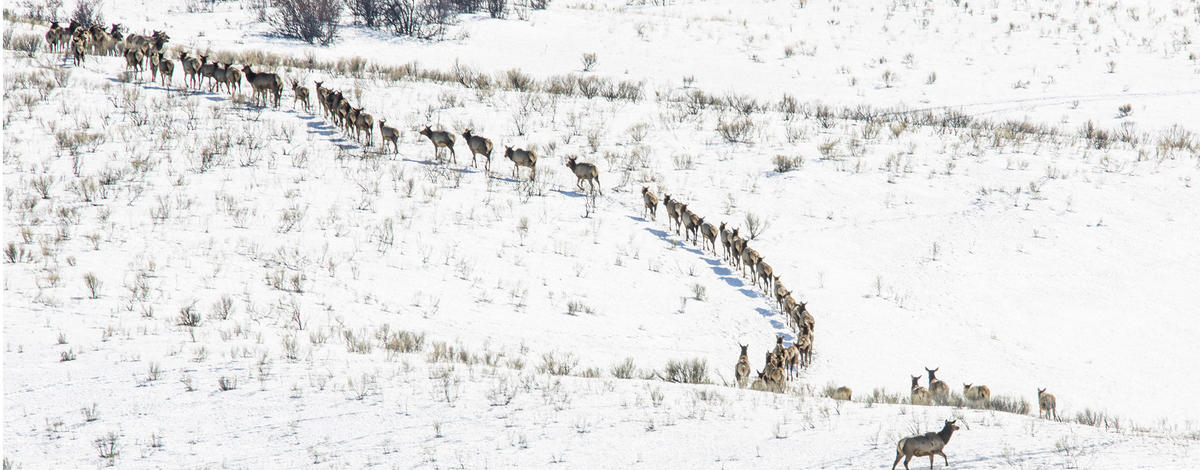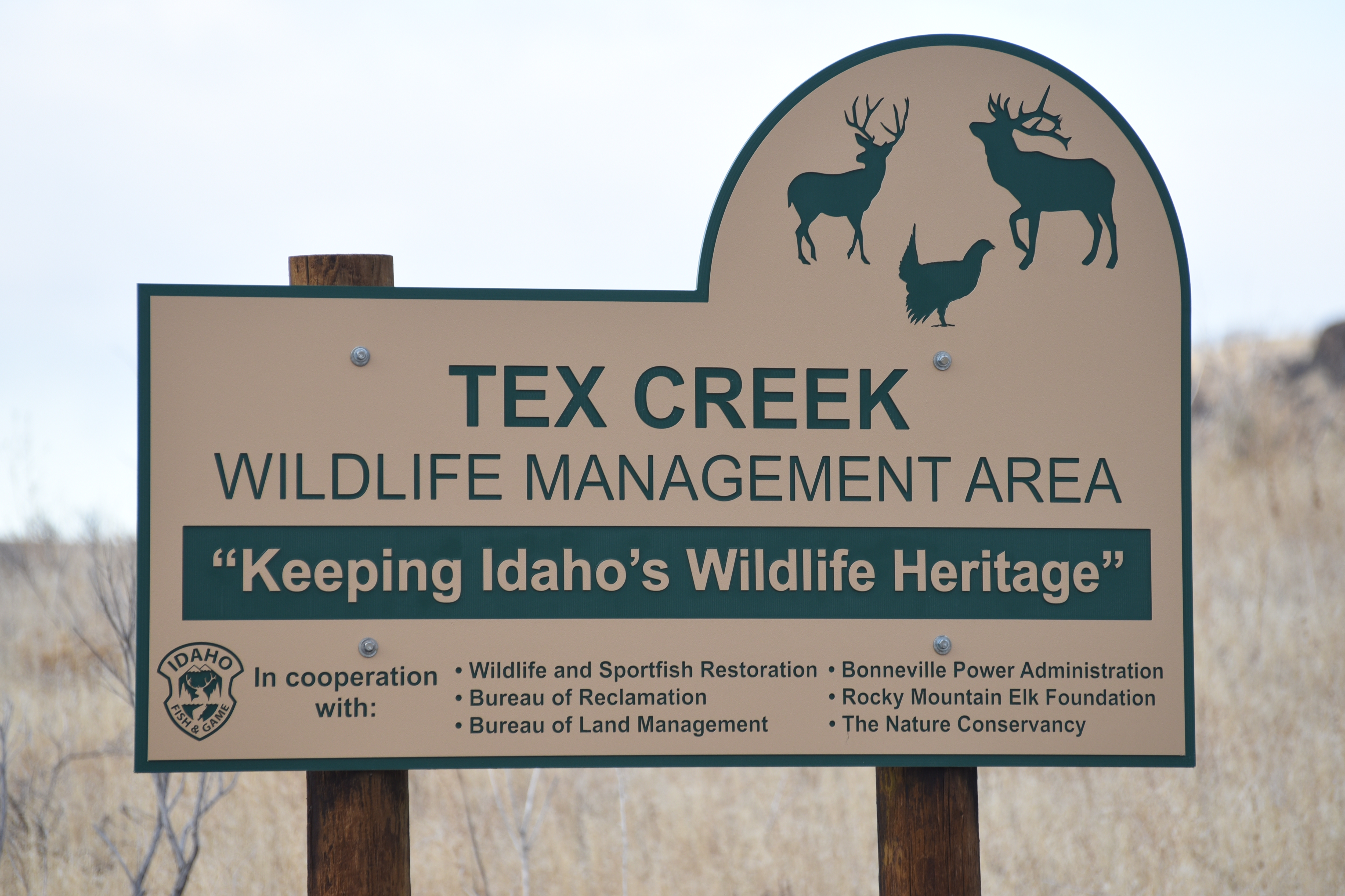Tex Creek Wildlife Management Area has the primary purpose of providing high quality and secure habitat for winter range for mule deer, elk and moose that migrate to the area from up to 70 miles away. It also supports a wide range of wildlife year-round.
Ironically, the loss of wildlife habitat led directly to the creation of Tex Creek WMA following the construction of Ririe Reservoir and Teton Dam in the early 1970's. After the initial land purchases for the mitigation effort by the Bureau of Reclamation, Idaho Fish and Game and Bureau of Land Management included some of their lands. Each agency owns approximately one-third of Tex Creek WMA, which is currently 35,218 acres. Idaho Fish and Game manages the property through a cooperative management agreement to support eastern Idaho's wildlife.
Over the years land managers have actively improved food and shelter for wintering wildlife; planting shrubs, improving aspen stands and grasslands, and planting annual crops. Shrub plantings of sagebrush, bitterbrush and other species provide hiding cover and food for a variety of wildlife. Improving aspen stands and grasslands increases plant diversity and available forage for lots of wildlife. Agricultural crops, such as winter wheat and alfalfa, provide high quality winter and spring forage for mule deer and elk.
With the quantity, quality and variety of vegetation available on Tex Creek, it supports a wide variety of wildlife. Moose are common. Columbian sharp-tailed grouse, ruffed grouse, dusky grouse and Hungarian partridge are present. Furbearers, nongame species and birds of all kinds thrive here year-round.
Once the snow starts flying, upwards of 4,000 elk and 3,000 mule deer may migrate to the WMA to spend the winter. With the WMA’s close proximity to farms and towns, Tex Creek staff work to keep elk and deer on the WMA and out of nearby farm fields and haystacks. From December 1 to April 15 most of the county roads are closed to protect wintering mule deer, elk and moose by reducing disturbance on the WMA.
The Henry's Creek fire in 2016 burned almost two-thirds of the WMA. Fire rehabilitation projects began immediately after the fire, including aerial seeding sagebrush and other desirable species, planting sagebrush seedlings, treating invasive annual grasses, and rebuilding fences. Tex Creek staff continue to focus significant resources to rebuild natural forage lost in the fires.
People are drawn to Tex Creek WMA to hunt and watch wildlife. Other popular activities include hiking, fishing, birding and horseback riding.


